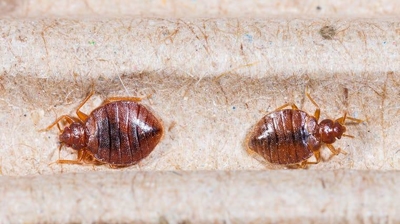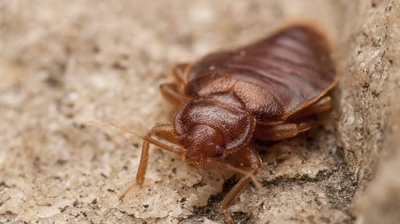

The Symptoms Of Lyme Disease And How It's Contracted
As Lyme disease becomes more of a concern for Americans, with approximately 300,000 new cases reported each year in the U.S., it is important to know the facts about this dangerous condition. If you are not familiar with this disease, Lyme is an infection caused by transmitting a spiral-shaped bacterium called Borrelia burgdorferi. This bacterium is transferred to humans by way of a tick bite. But not just any kind of tick transfers Lyme. According to the Centers for Disease Control and Prevention, the only type of tick that transmits this Lyme-causing bacterium is the black-legged tick, also called the deer tick. Many ticks that do not carry this bacterium are Lone star ticks, American dog ticks, Rocky Mountain wood ticks, and brown dog ticks.

How Lyme Disease Is Transmitted
To contract Lyme disease, a deer tick has to get onto your skin and bite you, and despite what you may have heard, they can only do this one way by climbing up. They don't fall from trees, fly, or jump. They climb up grass and wait for an unsuspecting person or animal to come by. This is why it is a good idea if you will be out in nature to follow some tick bite-prevention strategies. But we'll talk more about that a little later.
If you are unfortunate enough to get bitten by a tick, it is important to know that it generally takes 24 to 48 hours for Lyme disease to transfer from tick to human. When inspecting yourself or someone else for ticks, understand that they tend to hide in hard-to-see places such as the groin, armpits, and scalp.
Signs and symptoms of Lyme disease:
Early Signs:
- Red bump: The signs of Lyme disease usually appear in stages. An early sign is a small, red bump at the site of the bite. This generally goes away within a few days and is normal for any tick bite. This is not a sure sign of Lyme disease.
- Rash: An expanding red area that can begin anywhere from 3 to 30 days after an infected tick bites you indicates Lyme disease. This rash sometimes forms a bull's eye pattern, expanding slowly and can reach 12 inches across. This rash is typically not itchy or painful.
- Flu-like symptoms: Fever, chills, fatigue, body aches, and headache may also be present with the rash.
- Erythema migrans: This is an expanding annular lesion around the original tick bite. This is one of the hallmarks of Lyme disease, and some people develop this rash at more than one place on their bodies.
Later Signs: These can appear weeks or months after contracting the disease.
- Joint pain: Severe bouts of joint pain and swelling. This usually affects the knees but can shift from one joint to another
- Neurological problems: This can occur weeks, months, or even years after being bitten by an infected tick, leading to meningitis (inflammation in the membranes surrounding the brain), Bell's Palsy (temporary paralysis of one side of the face), numbness or weakness in the limbs, and impaired muscle movement.
- Nausea and vomiting.
- Diffuse rashes.
Some less common signs of Lyme:
- Heart problems
- Eye inflammation
- Liver inflammation
- Severe fatigue
How To Prevent Lyme Disease
There are several steps you can take to help prevent Lyme disease by preventing tick bites in the first place. These steps may also protect you from getting bitten by other types of insects as well.
- Avoid walking through grass and bushes as much as possible when you are out in nature. This step alone is the best way to prevent tick bites.
- Wear long socks, long pants, and tuck your pants into your socks.
- Tuck your shirt into your pants as well. If a tick does manage to climb up your pant leg, it then has a chance to get under your shirt if it is un-tucked.
- Wear light-colored clothing. The deer tick is tiny and can easily avoid detection. Light colors reveal the presence of a tick much more easily.
- Check for ticks. Upon returning from an outing, do a thorough check for ticks. If you find a tick, make sure to remove it entirely. If caught in time, this can prevent the disease.
- Get regular tick treatments for your lawn. You may not be able to control the ticks out in public areas, but there are treatments available that can help prevent ticks in your yard.
Talk To A Tick Control Professional
If you're concerned about ticks in your backyard, contact Parkway Pest Services for more information on outdoor tick control.
Customer Testimonials
-
Excellent, prompt, and courteous service. The technician arrived on time and took care of our yellowjacket nest and carpenter bee problems. Highly recommend Parkway if you have pest issues.- Jeff R.
-
Professional, knowledgeable, and great service. The technicians are always on time and the pest issues are solved within a couple of days. Highly recommend Parkway Pest Services for any pest problem. Thank you!- Jean R.
-
Parkway Pest Services responded very quickly to our request to have a tech come and inspect our rodent issue. They provided excellent service, outlining steps they would take as well as the steps we should take. Our pest situation has been resolved! I highly recommend them!- Robert M.
-
“Beyond friendly and professionally she really understood how freaked out we were and felt like she was in it with us the whole way.”- Emily W.
-
“The gentlemen that came over was very friendly and honest!”- Patty M.
-
“They sent a tech the same day and truly saved the day for my Aunt’s home in New York.”- D. Hunsaker
-
“I called Parkway, got Shoshanah on the phone, told her about the problem (she could tell I was a wreck!) Within an hour Steve was here!”- C. Petronella
-
“Had some scheduling issues and with her kindness patience and professionalism sorted it all out!”- John D.


Our Blog & News
Catch up with the latest blog articles from Parkway or see news that is happening in the pest control industry.







